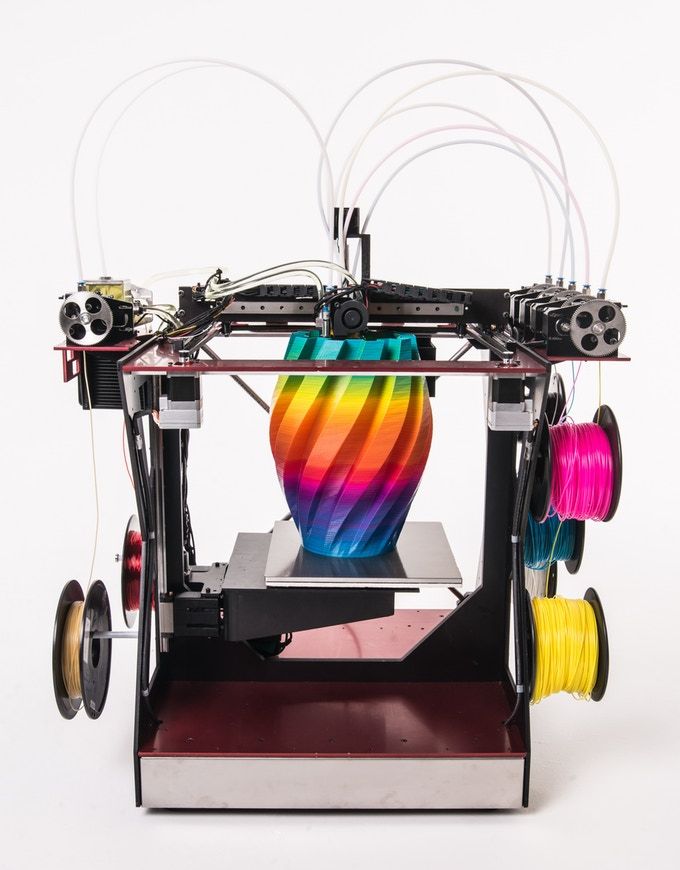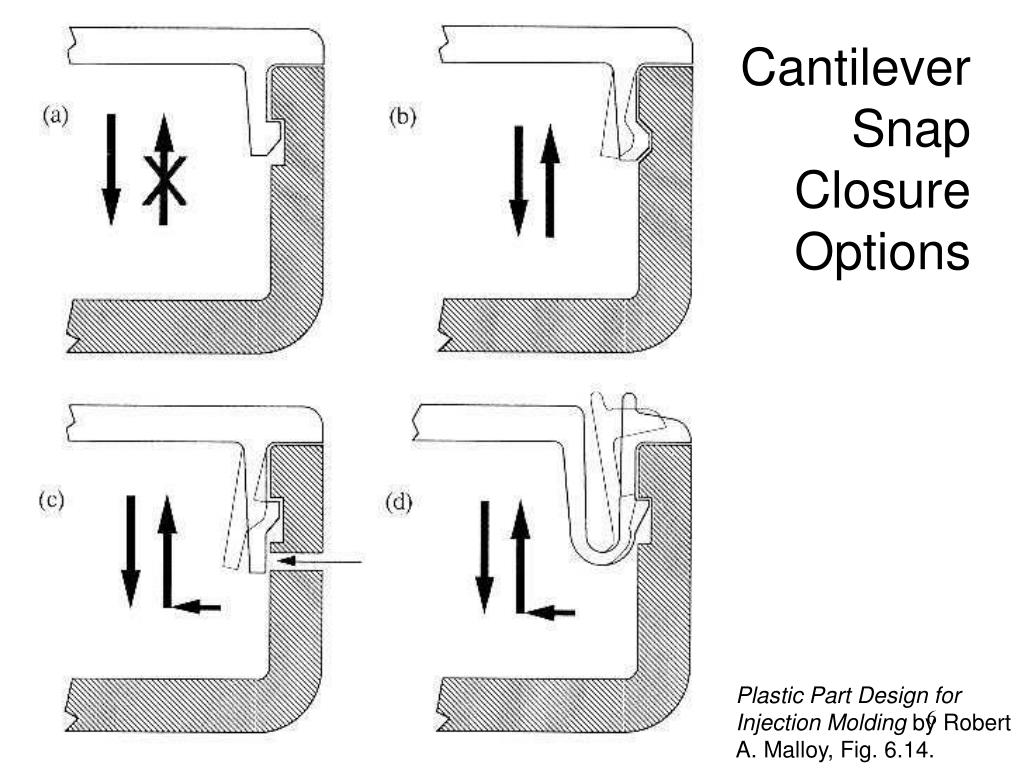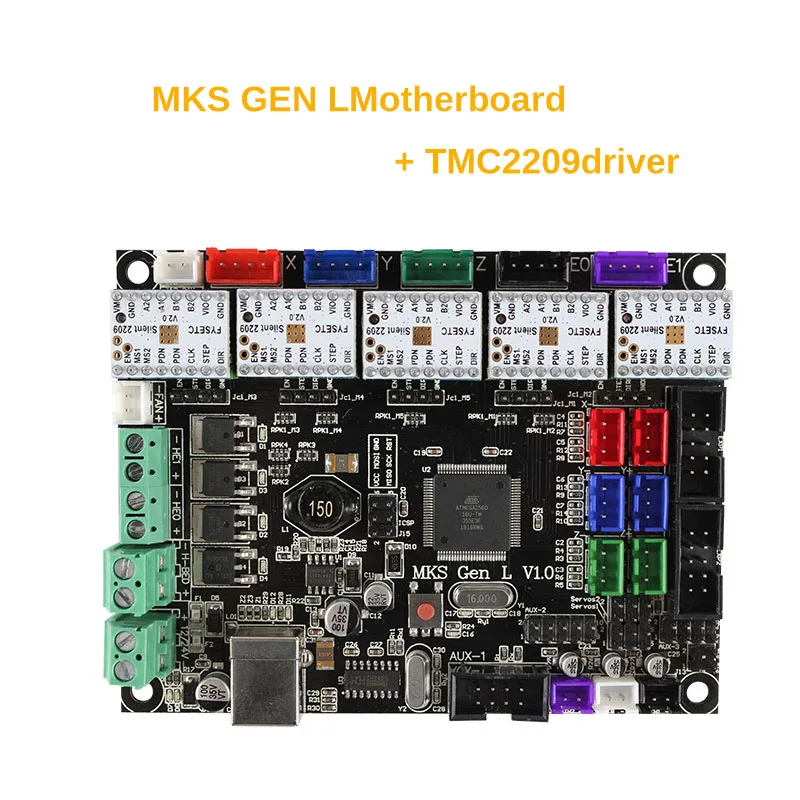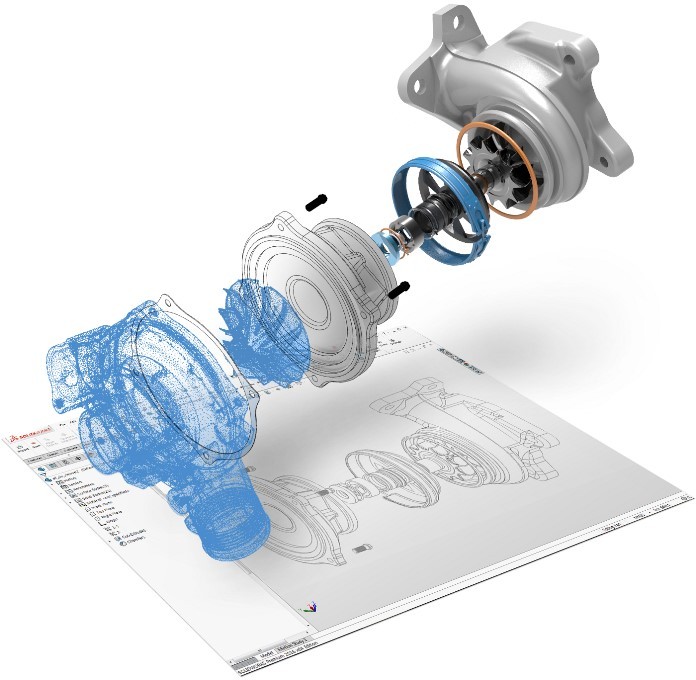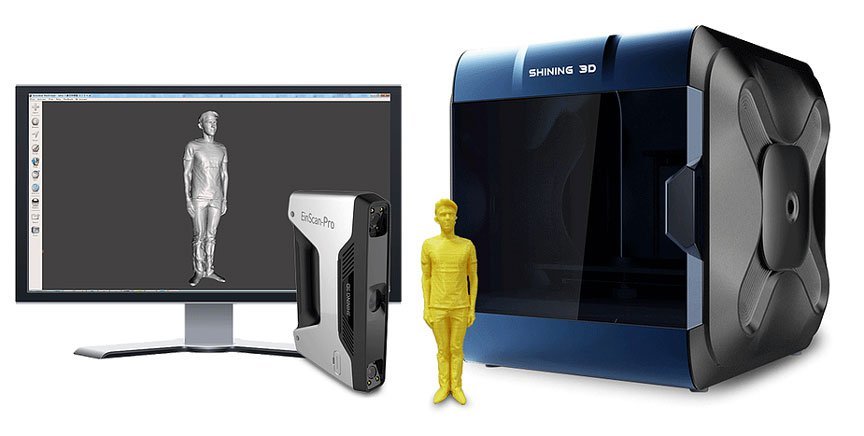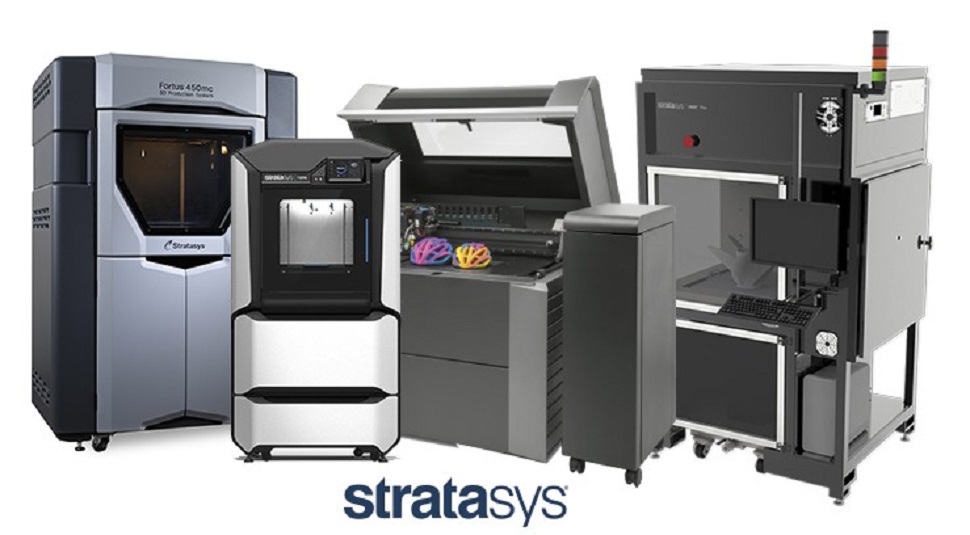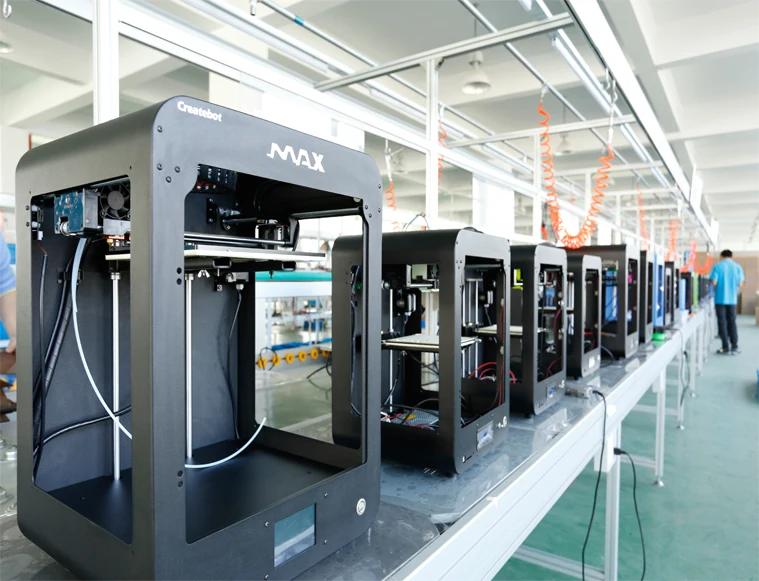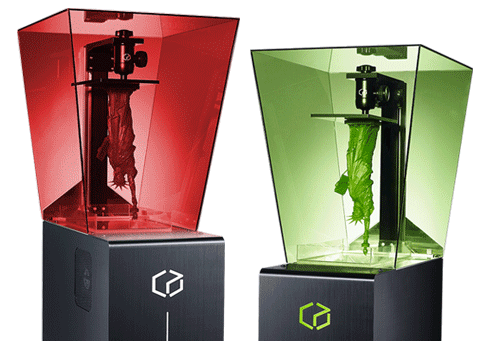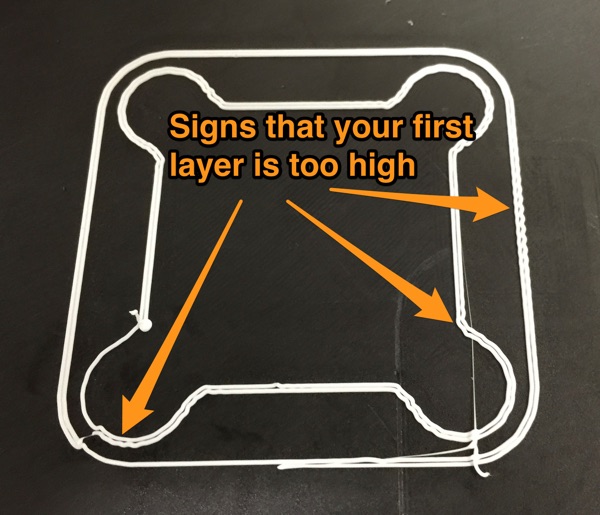Vader metal 3d printer
#3DStartup: Vader Systems and 3D Liquid Metal Printing
Published on June 6, 2018 by Alexandrea P.
In 2013, Vader Systems presented us with their prototype for their first 3D printer, the Mark 1, which was based on Liquid Metal Jet Printing technology. Created by Scott Vader and his son Zach, the startup wanted to make metal additive manufacturing more accessible. A few years later, they introduced the MK1, a machine based on the patented MagnetoJet technology that manipulates a liquid metal through magnetism. Like the Inkjet process, the Vader Systems solution propels droplets of liquefied metal, which helps to increase the speed of printing and lower the costs. We met with Jenae Pitts, the startup’s strategic advisor, to learn more about the solutions developed and the benefits that they offer.
3DN: Can you introduce us to Vader Systems?
Vader Systems is the inventor of the MagnetoJet technology, which enables metal 3D printing for commercial use, making the technology of tomorrow available today.
Jenae Pitts
Vader’s technology is available in three platforms that provide system solutions to address the needs and requirements of the rapidly growing additive manufacturing market. These solutions include the Vader Polaris™ liquid metal 3D printing system, The MagnetoJet Subsystem for integration into hybrid manufacturing equipment, and the Are Microsphere Production System which produces Vaderite on demand – a small-batch powder for specialty additive. This innovative approach provides the market with the flexibility to use the most dynamic and innovative technology for countless customized applications.
Vader works collaboratively with customers to understand their unique application and is positioned to create customized solutions. This intuitive approach delivers engineered solutions that are cost-effective while satisfying unique customer problems that can be solved by the platform of Vader’s technologies.
3DN: Can you tell us more about the MagnetoJet technology?
Vader Systems’ MagnetoJet technology represents a revolutionary advancement in 3D printing — eliminating the many issues inherent in legacy processes. Vader’s patented MagnetoJet technology employs the control and precision of an electromagnetic field to propel liquefied metal droplets and to produce high integrity, high-density parts faster and for less.
Vader’s patented MagnetoJet technology employs the control and precision of an electromagnetic field to propel liquefied metal droplets and to produce high integrity, high-density parts faster and for less.
The Vader System delivers up to 1,000 droplets per second with micron-level accuracy, while more than doubling the speed of conventional 3D powder bed metal printers. The input material for a Vader System is metal wire, which is up to 96% less expensive than specialty metal powders used in powder bed machines.
3DN: What are the advantages of your technology?
The Polaris is a turnkey system used to print metal 3D parts from conceptualization to realization utilizing Vader’s patented liquid metal process. Vader is excited to announce that it can now print the most sought-after aluminum alloys in the market, including 6061 and 7075. Producing parts at rapid speeds with low-cost material and virtually no waste creates high value for customers. These advantages are compounded when also considering the safety of utilizing non-hazardous input materials, which stand in strong contrast to the substantial requirements that come with operating a powdered metal 3D printing machine.
The MagnetoJet customized subsystem is designed to integrate into hybrid manufacturing systems such as CNC and machine center equipment. By eliminating the use of powdered metal, the MagnetoJet system allows manufacturers to produce parts and precisely finish them all in one system. Vader collaborates closely with customers to assure its MagnetoJet subsystem is customized to work within existing or planned equipment and workflow. As with the Polaris System, the benefits are significant – including isotropic material properties, enhanced safety, and finished parts with near full density.
The Ares “Powder” System produces highly uniform and consistent metal microspheres for on-demand usage. The microspheres have been tested by a leading national lab and show best-in-class results. Printing powder on demand eliminates the need to carry powder inventory and enables a wide variety of small batch applications. The microspheres are extremely consistent with a very narrow particle distribution size.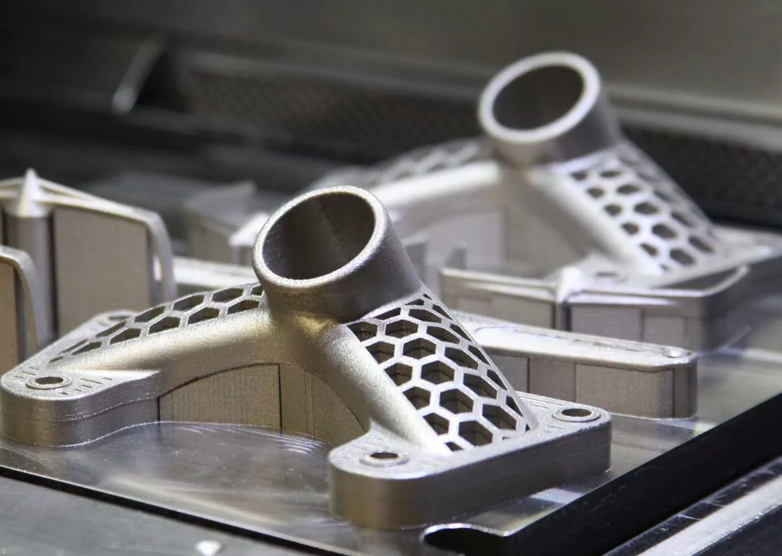 These attributes allow for excellent flowability, nearly 100% material usage, and more reliable results.
These attributes allow for excellent flowability, nearly 100% material usage, and more reliable results.
3DN: Who are your customers today and in what industries can your technology be applied to?
We focus on three markets: industrial, defense and aerospace, and research and development. Within the industrial space, we are working with customers interested in hybrid solutions that integrate our technology into current technologies, like CNC mills. We have drawn great interest from the automotive and casting industries.
Because Vader’s process does not require gravity (is not sensitive to vibration) and does not use powders, we are working with several aerospace and defense partners. Applications for this technology within this market include in-theater manufacturing, sustainment (replacement or repair of discontinued parts for land and sea craft), vertical integration of the supply chain, and printed circuit boards, for example.
The MK1 printer
3DN: What do you see in the future for metal additive fabrication?
We know the fourth industrial revolution is coming and that 3D metal printing augmented by web connectivity will be a part of it.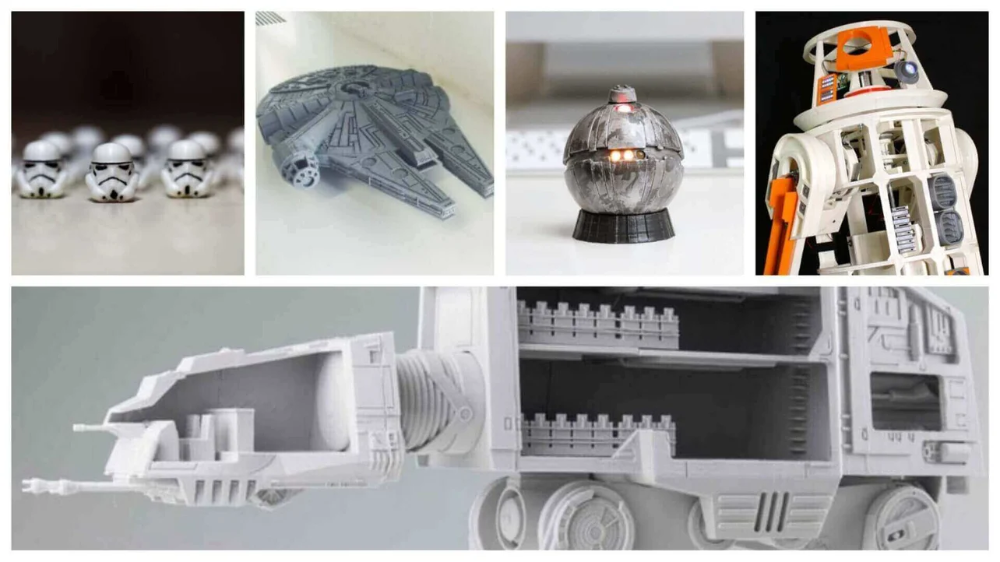 Vader Systems’ solutions offer real value to commercial manufacturers, now, that will help the industry prepare.
Vader Systems’ solutions offer real value to commercial manufacturers, now, that will help the industry prepare.
What do you think about Vader Systems solutions? Let us know in a comment below or on our Facebook and Twitter pages! Don’t forget to sign up for our free weekly Newsletter, with all the latest news in 3D printing delivered straight to your inbox!
Xerox acquires Vader Systems, steps into $8 billion 3D printing industry
0Shares
Xerox, the American manufacturer of printers and photocopiers, has acquired Vader Systems, a New York-based manufacturer of the liquid metal jet 3D printers.
As previously reported by 3D printing industry, most recently in October 2018, Xerox has long had eyes on additive manufacturing opportunities.
After years of anticipation on its expansion into the 3D printing industry, Xerox made the brief announcement at its Investor’s Day 2019 conference in New York. This acquisition is part of the company’s innovations strategy which aims to access a Total Addressable Market (TAM) of $8 billion for additive/digital manufacturing.
This acquisition is part of the company’s innovations strategy which aims to access a Total Addressable Market (TAM) of $8 billion for additive/digital manufacturing.
Xerox and Vader Systems declined to provide further details on the acquisition or the longer term strategy for 3D printing covered by Joanne Collins Smee and Steve Hoover during the investor day.
The Mk 1 Experimental metal 3D printer from Vader Systems. Image via Vader Systems.Xerox and 3D printing
In 2016, Janos Veres, the leader of the Palo Alto Research Center (PARC) Novel and Printed Electronics Program at XEROX, explained that the company’s planned transformation would involve 3D printing and Industry 4.0 technologies.
Then in 2017, PARC, was selected by US Defense Advanced Research Projects Agency, DARPA, to develop “a new computational paradigm” that goes beyond the limitations of existing 3D design platforms.
Following this, John Visentin CEO of Xerox announced on an investor call last year that the company is “developing a roadmap to participate in 3D printing.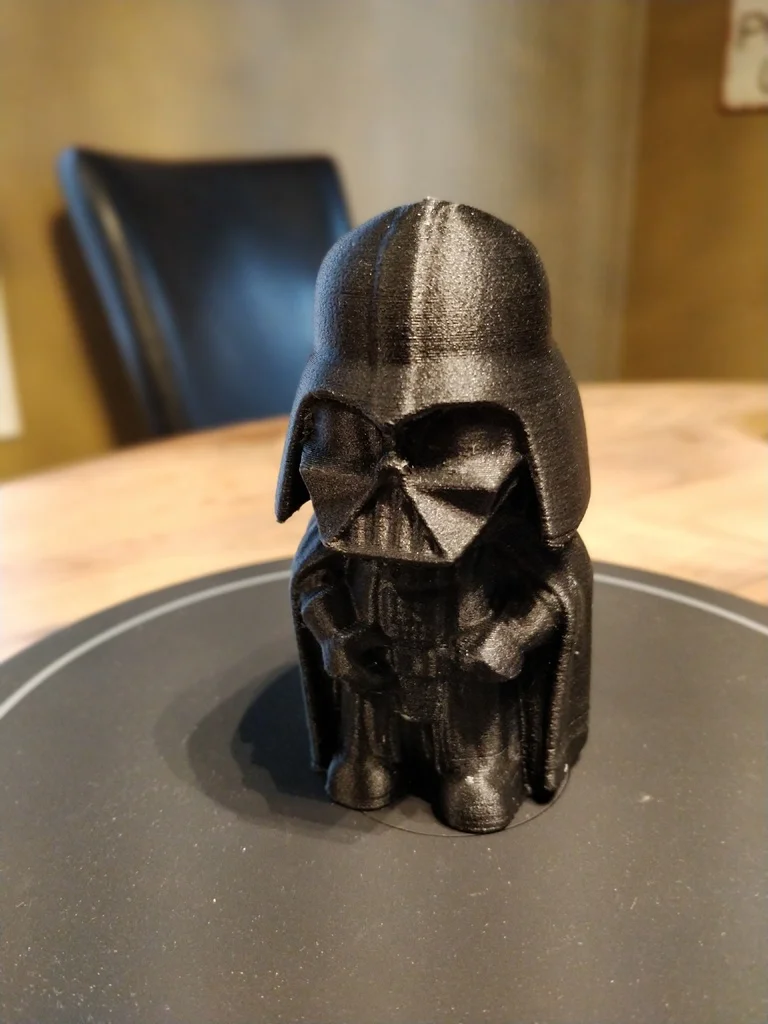 ” Visentin stated:
” Visentin stated:
“We are developing a roadmap to participate in 3D printing. We currently manufacture 3D printouts that we OEM where we have differentiated capabilities around print technologies, materials, toner and software that will enable 3D printing to move to the next level of adoption for the production of end-use industrial products.”
Presently, according to the Investor’s Day presentation, Xerox intends to broaden the current offering of 3D printing,i.e., the prototyping market with the new acquisition.
Xerox’s Roadmap for the next 3 years shared at the company’s Investor Day Conference. this particular strategy will leverage Vader Systems’ 3D printing technology to develop new materials and processes for industrial additive manufacturing. Image via Xerox.Vader Systems Magnet-o-jet technology
Founded in 2013, Vader Systems developed and patented metal 3D printing technology referred to as Magnet-o-Jet. This process, as described by Zach Vader, co-founder of Vader Systems, “takes in metal wire feedstock that gets melted into a ceramic nozzle. ”
”
“This makes a small pool [weighing] about 2 grams, the metal is always molten in the nozzle and then we use electromagnetism to induce a current and a radial inward force that produces a droplet.”
The magnet-o-jet liquid metal 3D printing subsystem. Image via Vader Systems,This is done on each droplet using an electrical pulse at a rate of 1000 times a second, which results in a high deposition rate. The technology is integrated into the company’s first system, the MK1 Experimental metal 3D printer, and its three newer systems, the Vader Polaris, the Magnet-o-Jet Subsystem, and the Ares Microsphere Production System.
Magnet-o-jet technology is said to expand the range of conductive metals used within metal additive manufacturing. Such limitations within industrial additive manufacturing are also being addressed by the University of Nottingham, who established an additive manufacturing research lab in 2015 with custom metal-jetting systems. While the metal prints from Vader Systems remain near net shape, results seen by 3D Printing Industry from the metal jet technology under development in Nottingham are significantly more advanced.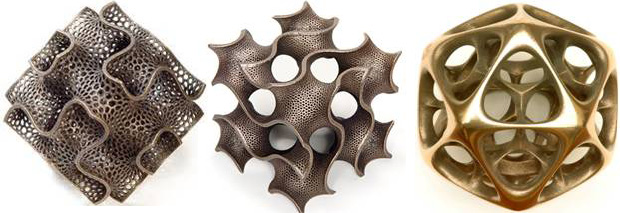
For more updates on the Vader Systems acquisition by Xerox, subscribe to the 3D Printing Industry newsletter, follow us on Twitter and like us on Facebook.
Also, nominations for the 3D Printing Industry Awards 2019 are open. Let us know the enterprises, technology and individuals leading the additive manufacturing sector.
Why not visit 3D Printing Jobs to commence your career in additive manufacturing?
Featured image shows the magnet-o-jet liquid metal 3D printing subsystem. Image via Vader Systems.
Tags Desktop Metal idc Janos Veres John Visentin Keith Kmetz PARC Tuan TranPham University of Nottingham Vader Systems xerox Zach Vader
Tia Vialva
Tia holds a BA in journalism, and has a background in writing news and features and is a senior journalist at 3D printing industry.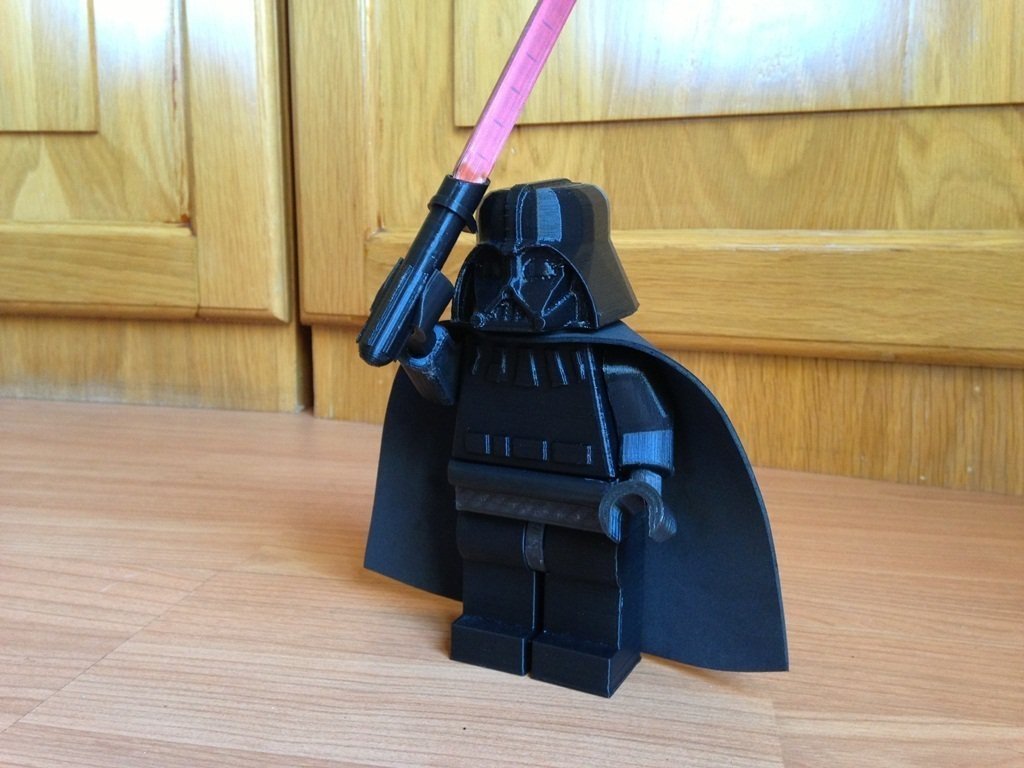
VADER 3D printer prints with metal
Almost all 3D printers for home use now use plastic as a working material. This option is ideal for creating models, but if you need to make a part with exact dimensions and high enough reliability, plastic, to put it mildly, is not the best material.
Scott and Zachary Vader, father and son working together, are going to solve this problem by creating a 3D printer using molten copper, aluminum and other similar metals as materials. By analogy, their machine, first unveiled at the Maker Faire in New York (last weekend), is an inkjet printer that has molten metal flowing through tubes instead of ink or liquid plastic. nine0003
In the near future, such machines are unlikely to appear in anyone's home. The first finished devices will be assembled by hand, and their price will be from 20 to 100 thousand dollars. On the other hand, according to the inventors, ordinary people will be able to feel the effect of introducing such printers into the production process of certain goods. The version of the "economy class" with a price of less than 10 thousand dollars Vader promise to release within a year. Although, according to Zachary Vader, "so far they have no idea how this model will look like." nine0003
The version of the "economy class" with a price of less than 10 thousand dollars Vader promise to release within a year. Although, according to Zachary Vader, "so far they have no idea how this model will look like." nine0003
In the future, simple inventors, or, as they are sometimes called, "makers" will be able to work with such machines and create ingenious mechanisms. "I think in a couple of years we can develop a model that can be bought by studios and non-profit organizations, providing their members with access to it," said Scott Weider. On the team's website, an even bolder statement is given: "Our printer will become a tool not only for large corporations, but also for ordinary people." nine0003
How?
Vaders cannot be considered the pioneers of metal printing as a phenomenon. Metal products were printed before them, but the most commonly used technology of selective laser sintering (selective laser sintering) was suitable primarily for decorative products, but not for industrial products or mechanical parts.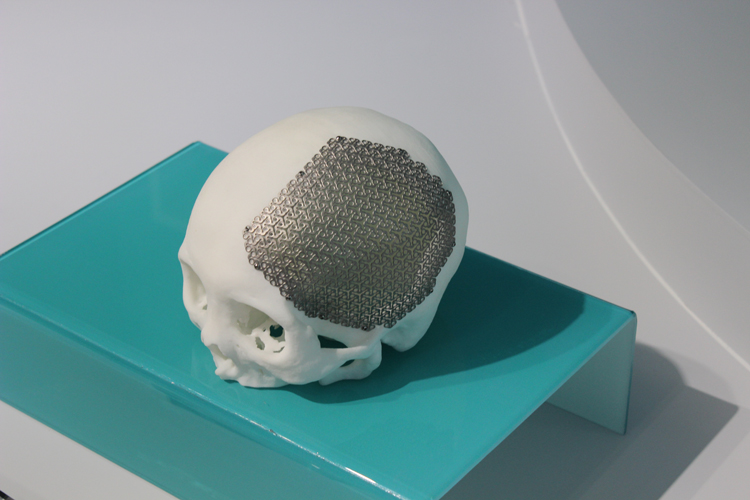 This technology looked like this: a layer of metal powder was located on the working surface and selectively heated with a laser, as a result, a finished product of a given shape was formed from the molten powder (the granules “sticked together” with each other). But because of the porosity, albeit low, they lacked the strength for industrial use. nine0003
This technology looked like this: a layer of metal powder was located on the working surface and selectively heated with a laser, as a result, a finished product of a given shape was formed from the molten powder (the granules “sticked together” with each other). But because of the porosity, albeit low, they lacked the strength for industrial use. nine0003
Vaders have chosen a different mechanism for their device, modeled after inkjet printers. After the first one is launched, an electric furnace starts to work, melting blocks of metal. The process is surprisingly energy efficient, with a 400-watt power supply (smaller than a gaming-grade PC) powered by a regular household power outlet. Attention was also paid to the design of the stove body - a glossy black cube, on which the name of the inventors is engraved in large letters (it seems that they took inspiration from their "namesake" from "Star Wars"). nine0003
20-year-old Zachary Vader, an engineer by training, was not very verbose in explaining how the printer worked.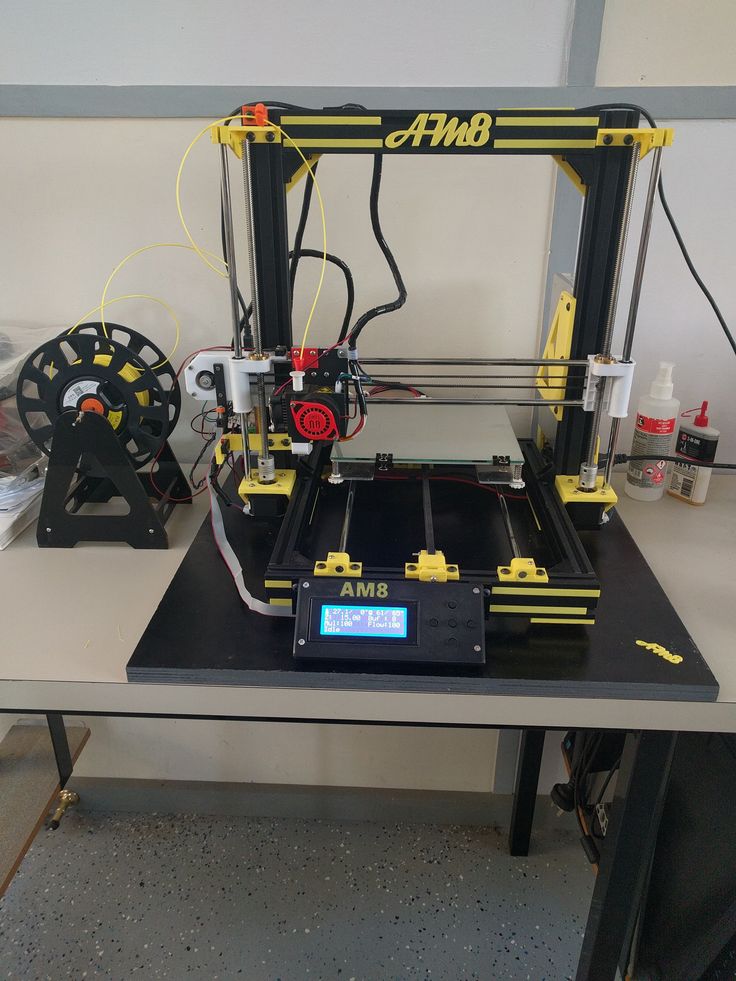 In general terms, it is as follows: the molten metal is precisely placed on the surface of the base with the help of magnets. Some metals have magnetic properties from the very beginning, to work with the rest (such as aluminum), the device passes an electric charge through the molten metal before starting work. A similar technology is used in conventional inkjet printers, but instead of metal, ink drops act as a material. In addition, no "inkjet" will make do with just one print head, instead droplets will simultaneously be fed through thousands of holes thousands of times per second. According to Vader, a similar principle is likely to be implemented in their device, and the speed of operation will approach or even exceed that for household "inkjet machines". By comparison, most plastic 3D printers only have one print head and about six auxiliary ones. nine0003
In general terms, it is as follows: the molten metal is precisely placed on the surface of the base with the help of magnets. Some metals have magnetic properties from the very beginning, to work with the rest (such as aluminum), the device passes an electric charge through the molten metal before starting work. A similar technology is used in conventional inkjet printers, but instead of metal, ink drops act as a material. In addition, no "inkjet" will make do with just one print head, instead droplets will simultaneously be fed through thousands of holes thousands of times per second. According to Vader, a similar principle is likely to be implemented in their device, and the speed of operation will approach or even exceed that for household "inkjet machines". By comparison, most plastic 3D printers only have one print head and about six auxiliary ones. nine0003
The electrical conductivity of different metals is different, so to add support for new types of metals, the printer design will need to be finalized.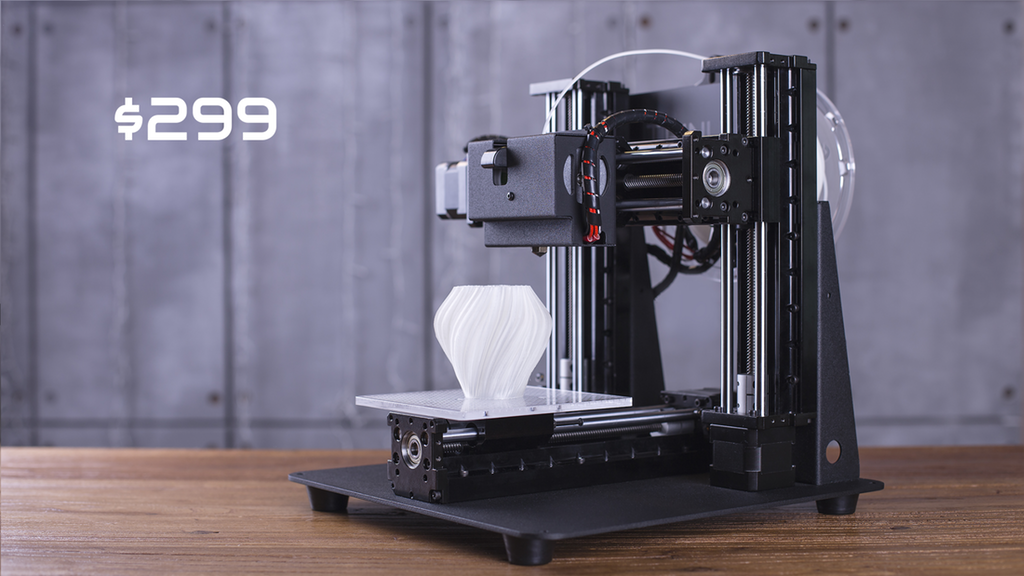 Although, according to Zachary, adding support for metals such as copper, silver and gold will not be difficult.
Although, according to Zachary, adding support for metals such as copper, silver and gold will not be difficult.
Vader still has a lot of work to do before the first prototype is completed and released. They finished assembling their device just a couple of days before the start of the New York show, while it still lacks one of the most important parts: printheads. Samples printed with this printer are therefore also missing. nine0003
Why?
The question may arise - what is all this for (besides the simple realization that "now we can do this")? Firstly, the advantages are the same as 3D printing in general - the ability to easily create samples, models and prototypes (now also from metal). Secondly, the cost of metal products manufactured according to individual parameters and orders, such as medical prostheses and implants, will decrease.
In addition, a new type of lightweight metal parts can be created this way. Objects printed on a 3D printer usually resemble a honeycomb in their internal structure - voids help save material and reduce the weight of the product. The Vader Printer can do this too. nine0003
Objects printed on a 3D printer usually resemble a honeycomb in their internal structure - voids help save material and reduce the weight of the product. The Vader Printer can do this too. nine0003
"You can make not just a gear, but a gear that is hollow inside and has supporting structures in the direction of torque," says young Vader, "It will be light weight, low manufacturing cost, but it will do its job perfectly."
In light of these opportunities, Scott Weider looks at the future of the family invention with optimism: "Someday it may take a third of the entire production process in factories. Of course, this is a very optimistic view." nine0003
Vader 3D is the first 3D printer capable of printing with molten metal » DailyTechInfo
Inventors Scott and Zachery Vader, father and son, have designed and prototyped a new Vader 3D printer that could revolutionize metal 3D printing. Vader 3D printer uses molten aluminum as "ink", instead of ordinary plastic, which makes it easy, simple and fast to create all-metal objects of any complexity without the need for lasers and complex anodizing processes.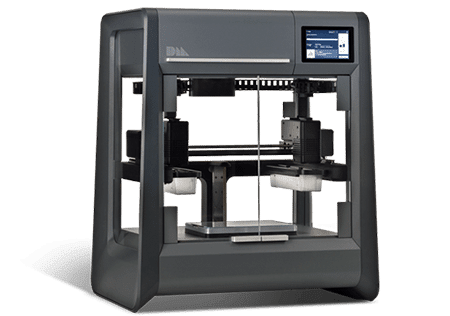 nine0003
nine0003
Until recently, the only way to 3D print metal objects was laser fusion. In this method, a high-power laser beam heated the metal powder particles in the right places until they melted, as a result of which they were fused into a single whole. There was another method, developed by Shapeways, in which refractory metal powder was "glued" together at high temperature using ceramic binders and low-melting bronze, but this method was never widely adopted. nine0003
The Vader 3D printer has a thermal chamber in which the aluminum melting process takes place. Then, with the help of forces arising from the phenomena of an electromagnetic nature, the molten metal is forced out of the chamber onto the base. The metal leaves the thermal chamber of the printer in the form of droplets or thin streams moving at high speed, which allows it not to cool to the solidification stage until the very moment of contact with the base or surface of the partially printed object. The whole process of printing with molten metal is very similar to the process when printing on paper using a conventional inkjet printer.


